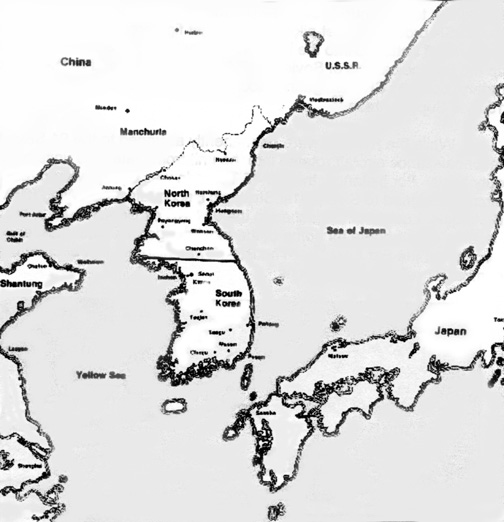|
The Impact of U.S. Aerial Reconnaissance during the Early Cold War (1947-1962): Service & Sacrifice of the Cold Warriors |
|||||||||
 |
 |
||||||||
|
Page 1 of 6 Pages Answering the Call All such [reconnaissance] flights cannot remain a secret and probably a small percentage of aircraft would be destroyed. Through 17 January 1951, reconnaissance aircraft losses in Korea have averaged one percent of the effective sorties flown. It is anticipated that future losses would be somewhat higher, not so great as to be prohibitive. Outlined in Summary of Risks paragraph from the JCS 2150/11 Cold War Turns Hot: Far East and Global Reconnaissance The Soviet explosion and fall of China to the Communists in the last half of 1950 shocked U.S. leadership, who remodeled the Truman Doctrine into a tougher policy. Up until this point, economics had played a great role in downsizing the post-WW II military and keeping military spending low. The communist actions at the end of the decade spurred a stronger U.S. commitment and more direct action. In April 1950, the administration produced NSC 68 – a new doctrine which took a tougher line in the U.S. effort to “contain” Soviet/Communist expansion. This new document also reversed the course of military spending to prepare America’s military forces to meet potential threats. (54) But before a revised NSC 68 could be approved by President Truman, several more dangerous turns took place on the international scene which would have a great influence on U.S. aerial reconnaissance’s future role and the security of the nation as a whole. The first event took place on 8 April 1950 when a U.S. Navy (USN) PB4Y-2 reconnaissance plane was shot down by Soviet air defense fighters over the Latvian/Baltic Sea region with a loss of all ten crewmen. (55) Though this was not the first time a Soviet fighter had intercepted or fired warning shots at a U.S. reconnaissance aircraft (several incidents took place in the Northern USSR/Alaskan areas), this marked the first shootdown of a Cold War reconnaissance aircraft. The effect of this action and subsequent media coverage forced the Truman administration to seriously consider the international ramifications of flying future aerial reconnaissance around the world. It also brought politics into aerial reconnaissance operations for the first time. During a moratorium on continued reconnaissance flights, military and administration officials devised a concept under which continued flights would be flown. The JCS formalized this program on 5 May 1950 as the Special Electronic Airborne Search Project (SESP). With President Truman’s approval, the SESP was legitimized as a national intelligence asset under the JCS’s direct control. The watershed event which did more than anything else to expand aerial reconnaissance during the Cold War was the invasion of South Korea and the subsequent war to contain Communist expansion in the Far East. When Soviet – equipped and PRC – backed Communist North Koreans invaded South Korea on 25 June 1950, U.S. leaders were convinced that this was the beginning of a systematic Communist approach to take over the world by force. More than merely testing the U.S.’s resolve in the Far East, this military action pushed national leadership (and the USAF) into worldwide preparation for the anticipated conflict which was thought sure to begin between the U. S. and the USSR. For the USAF, this meant not only greatly expanding air power in the Far East theater but also stepping up preparations which would enable it to go to war with North Korean’s supporters – namely, the USSR and PRC. An example of this thinking comes directly from the Commander of SAC, General Curtis LeMay, who reported
Immediate aerial reconnaissance requirements in the Far East theater were met by the 91st Strategic Reconnaissance Squadron (SRS). When initially called to respond to the invasion, the 91 SRS was the only long–range (strategic) aerial reconnaissance unit stationed in the Far East and was equipped with a half-dozen RB-29’s. By the end of the war, it would be the largest squadron in the Far East with over 800 personnel and six different types of aircraft (sometimes totaling in the hundreds) assigned to it at any one time. (57) |
|||||||||
 |
|||||||||
|
Source: Larry Davis, Air War over Korea (Texas: Squadron Signals Publication, Inc. 1982), Front Inside Cover (57) |
|||||||||
|
Aircraft flown by the 91 SRS included the RB-29, RB-36, RB-45, RB-50, KB-29 and WB-26. The first four types were reconnaissance – configured aircraft which performed a wide variety of missions from visual and photo bomb damage assessment (BDA), through highly technical PHOTINT, ELINT and, SIGINT missions. The KB-29 was the first USAF refueling platform used in combat and the WB-26 aircraft were used for weather reconnaissance. (58)
Attributions (53) This Top Secret JCS Study was declassified under NND 883120 on 16 July 1993. End of Page 1 of 6 Pages, Chapter 3 — Go to Page 2 You may go to Page — 1 — 2 — 3 — 4 — 5 — 6 — this chapter or you may go to Cover Page — Editor’s Introduction — Overview Acknowledgments — Table of Contents Appendixes — A — B — C — D |
|||||||||